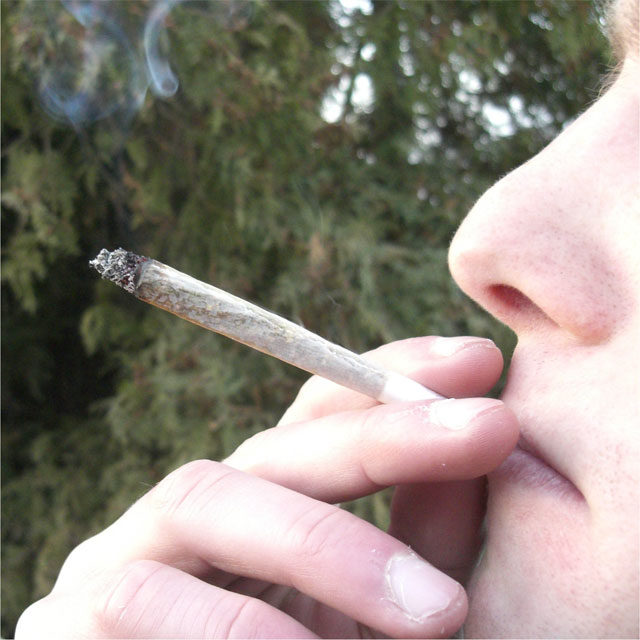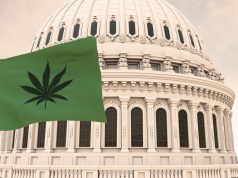
A new Gallup poll released earlier this week finds that self-reported cannabis consumption nearly doubled in the last two years. Thirty-three million people, or 13 percent of U.S. adults, report currently using marijuana, up from 7 percent in 2013.
The number of adults that report having used marijuana at some point in their lives also rose slightly from 38 percent in 2013 to 43 percent in 2016.
Considering that cannabis is still federally illegal, this is remarkable growth, but it is hard to determine if it is a function of state level decriminalization and legalization efforts or of a decrease in stigma surrounding cannabis consumption.
It is difficult to connect prohibition with prevalence of use because criminalization doesn’t necessarily get rid of the market but rather forces it underground — behind closed doors with closed lips. With no oversight or regulation, there is simply less to measure resulting in a lack of data and, with legal penalties for use and distribution, people are more reluctant to admit their own behaviors. Just like in alcohol prohibition, the prohibition of cannabis might appear to have reduced consumption, but the reality of the situation is far more convoluted than the numbers suggest.
The Substance Abuse and Mental Health Services Administration released a poll earlier this year that draws a correlation between stigma and use rates. According to the survey, people who use marijuana less are more likely to say that marijuana use is harmful. Conversely, those who use it more are less likely to cite its harmful effects.
Since 2013, legal cannabis markets in the U.S. have grown, significantly increasingly legal access. In 2013, only two states, Colorado and Washington, had legal, adult-use markets and they were both in their infancy. Three years later, four states have legal, adult-use markets with another five states voting on legalization ballot initiatives in November. Currently, half of U.S. states have some form of legal medical markets and another four have legislation in the works.
It appears that adults residing in or near legal markets are more likely to use cannabis. According to the Gallup poll, residents in the West, where all of the legal, adult-use markets are located, are much more likely to say they consume marijuana than in other parts of the country.
But just as important as the states that have been successful in passing cannabis legislation, are those that considered initiatives that ultimately failed. Whether they make it or not, these ballot initiatives introduce a new rhetoric into congressional floors and into the public dialogue. As the conversation becomes less taboo, elected officials and citizens reckon with their own attitudes and opinions of the plant and, because of prohibition, probably for the first time.
The legalization chatter isn’t just relegated to the state level — four presidential candidates, Democratic, Republican, Green Party and Libertarian — have all expressed their support for federal legalization, albeit in varying degrees. International governments are also hosting their own considerations of drug law reform that represent a significant change in approach to legalization of cannabis consumption that favors decriminalization and education in an effort to foster a health-based approach.
Whether or not people use cannabis, support for legalization is increasing across the board. A Center for Public Affairs Research poll released in March finds that 61 percent of adults support legalization, the highest reported number to date. With the vast majority of Americans in favor of reform, the days of prohibition are likely numbered.
Because the early footings of legal cannabis market were achieved through campaigns that sought to regulate cannabis like alcohol, it is interesting to track changing attitudes about alcohol in step with those on cannabis.
According to a 2014 survey from the National Institute of Health, 87 percent of adults report that they have drank alcohol at some point in their lives and 71 percent drank in the last year. According to a 2015 Gallup poll, one in five U.S. adults say moderate drinking is healthy, while 28 percent perceive moderate drinking as bad for health.
The main difference is that while negative perceptions about alcohol are based in evidence of alcohol related accidents, deaths and illnesses, negative perceptions of cannabis do not stem from any such data. Instead, they are largely rooted in fears, misunderstanding and misinformation.
Cannabis prohibition, just like alcohol prohibition, succeeded in one respect — both significantly reduced the amount of consumption of the banned substance, on paper. Each state has different goals for their legalization efforts, but for the most part they share the directive to make consumption safer and more responsible, while minimizing the harmful effects of criminalization.
This opinion column does not necessarily reflect the views of Boulder Weekly.














